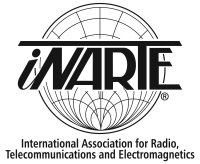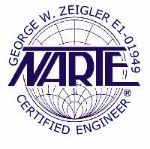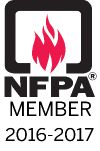Information Needed Before Selecting Any Ac Surge Protection Device(s) (SPDs) For Home or Facility.
Over the years Underwriters Laboratories (UL) 1449, Institute of Electrical and Electronics Engineers (IEEE) standard C62.41, and International Electrotechnical Commission (IEC) 61643-1 surge protection terminology has been changing.
These changes and different marketing campaigns have added confusions when a layman needs to of select the correct Ac SPDs.
Example: No Nationally Recognized Testing Laboratory (NRTL) recognizes a Joule rating as an accurate rating of performance of Ac SPD. The acceptable is the kA rating per mode
Selecting the correct Ac SPDs involves more than just pricing. Ac SPDs needs to be chosen for the level of protection required for the equipment being protected. If not, then the Ac SPDs that are installed could be worthless from an equipment protection point of view.
Need To Know Terminology For Ac SPDs
- Modes of Protection
- Voltage Protection Rating (VPR)
- Nominal Voltage
- Maximum Continuous Operating Voltage (MCOV)
- Nominal Discharge Current (In) Type 1 (10kA or 20kA)
- Nominal Discharge Current (In) Type 2 (3kA, 5kA, 10kA or 20kA)
- Nominal Discharge Current (In) Type 3
Note 1: IEEE Uses Categories instead of Types
Category C: Service Entrance, more severe environment: l0kV, l0kA surge
Category B: Downstream, ≥ 30' from category C, less severe environment: 6kV, 3kA surge
Category A: Further downstream, ≥ 60' from category C, least severe environment: 6kV, 0.5kA surge
Note 2: IEC Uses Type and Class instead of just Types
Type 1 / Class I / Class B
Type 1+2 / Class I+II / Class B+CType 2 / Class II / Class C
Type 2+3 / Class II+III / Class C+DType 3 / Class III / Class D
- Ac Surge Protection Devices (SPDs) kA Protection Rating per Mode
Terminology Content For Ac SPDs
Modes Of Protection: Every Ac SPD made does not have each mode of protection protected.
- With Ac three phase you can purchase surge protection with up to 10 modes of protection.
- Phase A (L1) to Neutral
- Phase B (L2) to Neutral
- Phase C (L3) to Neutral
- Phase A (L1) to Ground
- Phase B (L2) to Ground
- Phase C (L3) to Ground
- Neutral to Ground
- Phase A (L1) to Phase B (L2)
- Phase A (L1) to Phase C (L3)
- Phase B (L2) to Phase C (L3)
- With Ac single phase you can purchase surge protection with up to 6 modes of protection.
- Phase A (L1) to Neutral
- Phase B (L2) to Neutral
- Phase A (L1) to Ground
- Phase B (L2) to Ground
- Neutral to Ground
- Phase A (L1) to Phase B (L2)
Voltage Protection Rating (VPR): The VPR is the voltage value where the Ac SPD limits a specific surge between modes of protection. The lower the VPR the better the equipment is protected
- UL 1449 has established Ac Surge Protection (SPDs) Voltage Protective Ratings (VPR) so that a consumer can purchase the per mode level of protection they desire.
When the SPD test results are: | The SPD VPR is: |
330 Volts ≤ 330 | 330 Volts |
331 Volts ≤ 400 | 400 Volts |
401 Volts ≤ 500 | 500 Volts |
501 Volts ≤ 600 | 600 Volts |
601 Volts ≤ 700 | 700 Volts |
701 Volts ≤ 800 | 800 Volts |
801 Volts ≤ 900 | 900 Volts |
901 Volts ≤ 1000 | 1000 Volts |
1001 Volts ≤ 1200 | 1200 Volts |
1201 Volts ≤ 1500 | 1500 Volts |
1501 Volts ≤ 1800 | 1800 Volts |
1801 Volts ≤ 2000 | 2000 Volts |
2001 Volts ≤ 2500 | 2500 Volts |
2501 Volts ≤ 3000 | 3000 Volts |
3001 Volts ≤ 4000 | 4000 Volts |
4001 Volts ≤ 5000 | 5000 Volts |
5000 Volts ≤ 6000 | 6000 Volts |
Per UL 1449 standard each Ac SPD VPR is established from the test results using only a 6” lead.
Depending on the voltage level, the rise time of the voltage, and the frequency of the voltage each foot of cable past the 6” lead length could add between 100-200 volts per foot above the UL VPR of the Ac SPD.
Example: customer purchases an Ac SPD with a 330 VPR but the Ac SPD lead length is 36”. This means during a power surge the 330 VPR rated Ac SPD could turn out to actually have a 600 to 900 VPR. See chart below for equipment damaged time from a quick voltage surge.
Quick Surge Duration Time and PEAK Voltages That Will Result in Equipment Damage | |||
Line Voltage (RMS/Peak) | (.000008/.00002 Seconds) | (.0001 Seconds) | |
8-20 μs Microsecond | Up to 100 μs Microsecond | More than 100 μs Microsecond | |
480 RMS/678 Peak | 2,400/3,394 Volts | 1,680/2,376 Volts | 622/880 Volts |
77 RMS/392 Peak | 1,387/1,958 Volts | 970/1,371 Volts | 360/509 Volts |
240 Volts/339 Peak | 1,202/1,700 Volts | 840/1,188 Volts | 311/440 Volts |
120 Volts/170 Peak | 601/850 Volts | 356/593 Volts | 156/220 Volts |
Nominal Voltage: Is the normal voltage rating of the SPD. Some common voltage examples are:
- 120/240 Volts Single Phase
- 120/208 Volts Three Phase
- 277/480 Volts Three Phase
MCOV Maximum Continuous Operating Voltage: The maximum designated root-mean-square (rms) value of the power frequency voltage that may be continuously applied to the mode of protection of an SPD.
Nominal Discharge Current (In): The manufacturer shall specify (declare) the value of the Nominal Discharge Current (In) to which the sample will be tested. The value of the Nominal Discharge Current (In) selected by the manufacturer shall be: 10 kA or 20 kA for Type 1 SPDs and 3 kA, 5 kA, 10 kA or 20 kA for Type 2 SPDs. With the SPD in the circuit the surge generator voltage shall be adjusted to ensure that the value of In (selected by the manufacturer) is impressed through the SPD. The resultant waveshape is permitted to deviate from the initial short circuit calibration of the 8 x 20 μs waveshape providing that the front time is a maximum of 9 μs and the duration is a minimum of 16 μs.
Per Mode Rating Defined: An SPDs per mode rating is based on the total amount of energy it can shunt from one circuit conductor to another. If an MOV capable of shunting a 50 kA of current is used in each pathway, then the per mode rating of the SPD is 50kA.
- The IEEE standard C62.41, states “a building's wiring adds impedance that will limit the surge current. The standard also states that 10kA devices have been adequately limiting surge currents at the service entrance for several years.”
- Therefore, it is reasonable to say the largest surge that can enter a building's wiring system is 10kA; however, a direct lightning strike would produce a much larger surge.
- The only reason to have an Ac SPD per mode over 10kA is for a longer life of the Ac SPD.
- Technically speaking if a home or facility gets a lightning strike it may or may not end the life cycle of a 10kA per mode Ac SPD. Let us say a 250kA fer mode was installed it might tale 25 or more lightning strikes.
Ac SPD Response Time: UL, IEEE and IEC have not chosen to endorse response time as a valid Ac SPD rating parameter.
Coordinating Cascaded Ac SPDs: Coordinating cascaded is stepping down the Ac SPDs VPR and kA ratings downstream to the protected equipment. However, each Ac SPD should be a minimum of 30 wire feet from each other. Some SPD manufacturers recommend what they called “a 3, 2, 1 rule of thumb” for sizing SPD’s. 300kA rating for main panel, 200kA rating for distribution panel, and 100kA for final equipment panel.
« Back to Blog






Comments